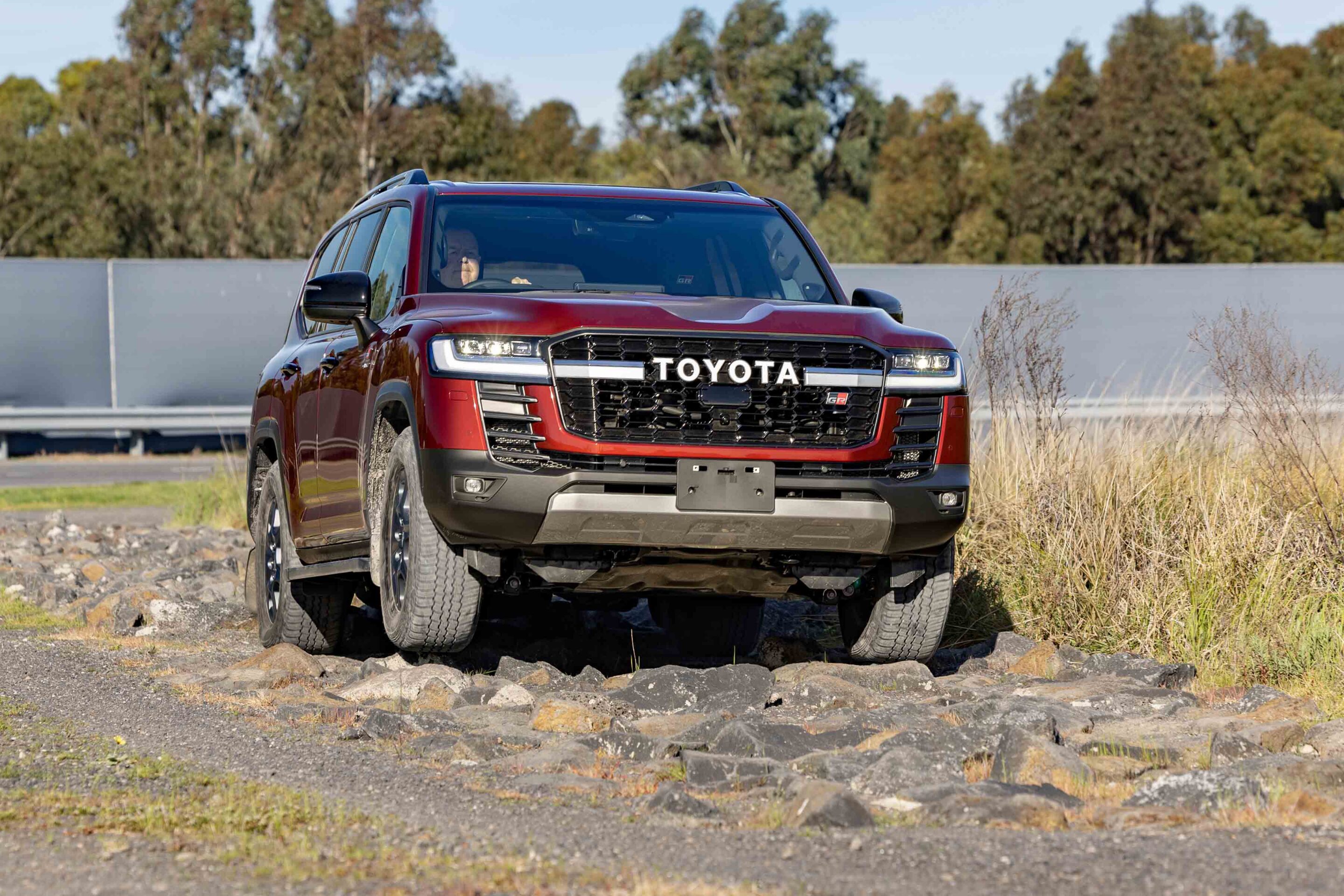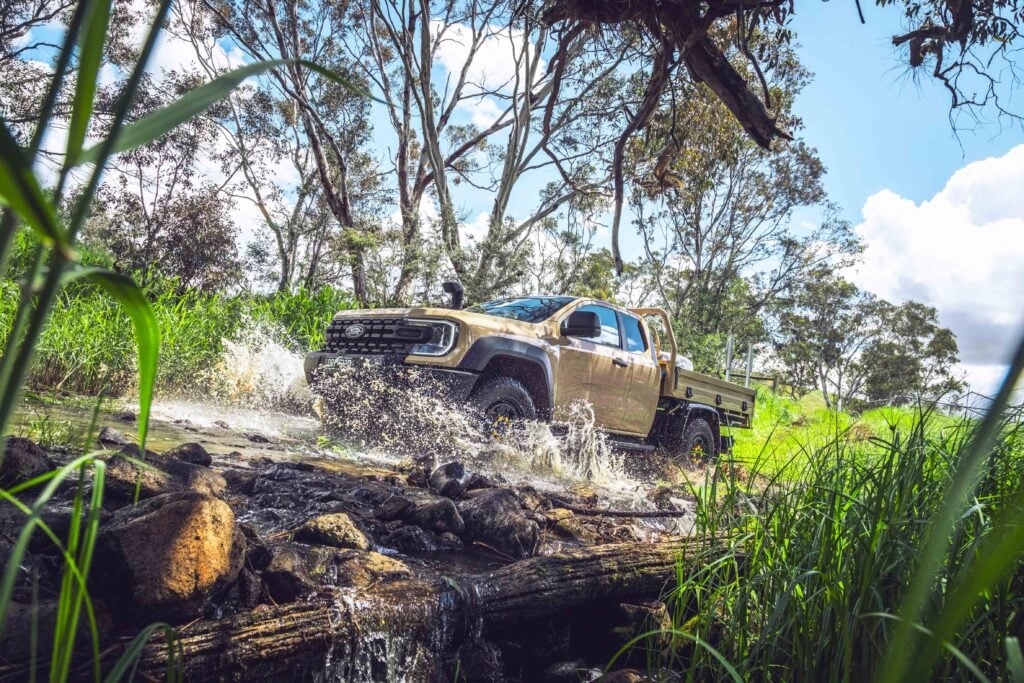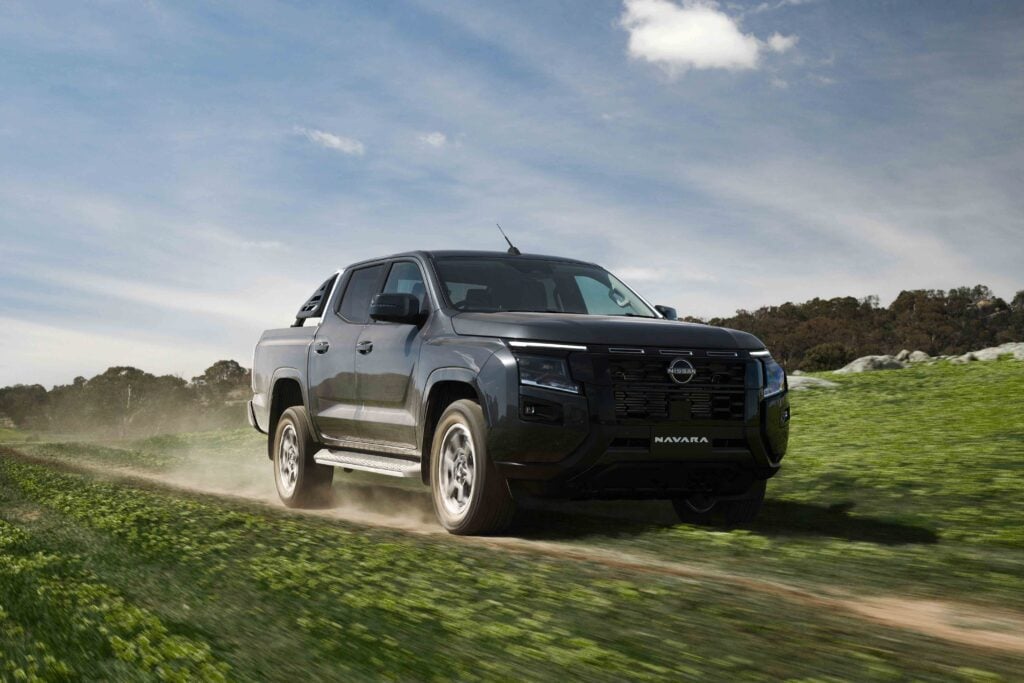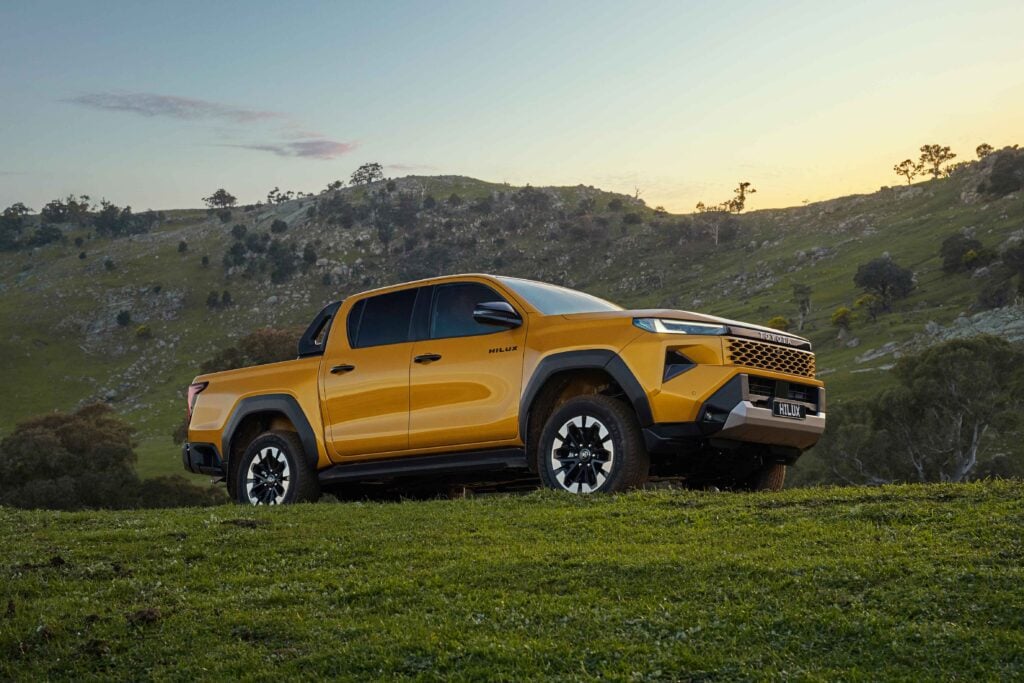Toyota Australia (TMCA) has previewed the LandCruiser 300 Performance Hybrid, arriving in early 2026. The petrol-hybrid returns petrol to the LC300 range, limited to GR Sport and Sahara ZX two-row, five-seat models, with a price premium expected.
Adapted from the Tundra’s TNGA-F chassis, the hybrid pairs a 3.5-litre twin-turbo V6 (326kW/790Nm) with an electric motor and 10-speed auto, driving through the LC300’s full-time dual-range transfer case. Off-road features including locking diffs, KDSS, MTS and Crawl Control remain unchanged, with a slightly raised cargo floor for the battery.
Toyota’s Performance Hybrid manages petrol and electric power via a clutch, with petrol active above 30 km/h and electric-only operation below. Fuel-consumption figures are yet to be released.
Pre-production drive
The GR Sport LC300 shown here was a pre-production version of the Performance Hybrid and, at the time, the only one in the country. Even so, Toyota was willing to let us take it for a drive on its short but comprehensive vehicle evaluation and training track at Altona.
With its tuning focused more on performance than outright efficiency, the system delivers strong acceleration, responsive power and ample torque for towing. To demonstrate this, we used a short straight section of road for a 0-100km/h blast in the 300.
Flooring the accelerator from a standstill delivered a hefty shove in the back – something you won’t experience in any other production 300 Series. The acceleration is forceful and rapid, with the needle sweeping past 100km/h in no time before we had to brake hard for a 90-degree corner. Toyota isn’t exaggerating when it calls this a Performance Hybrid, though it has yet to reveal any official 0-100km/h times.
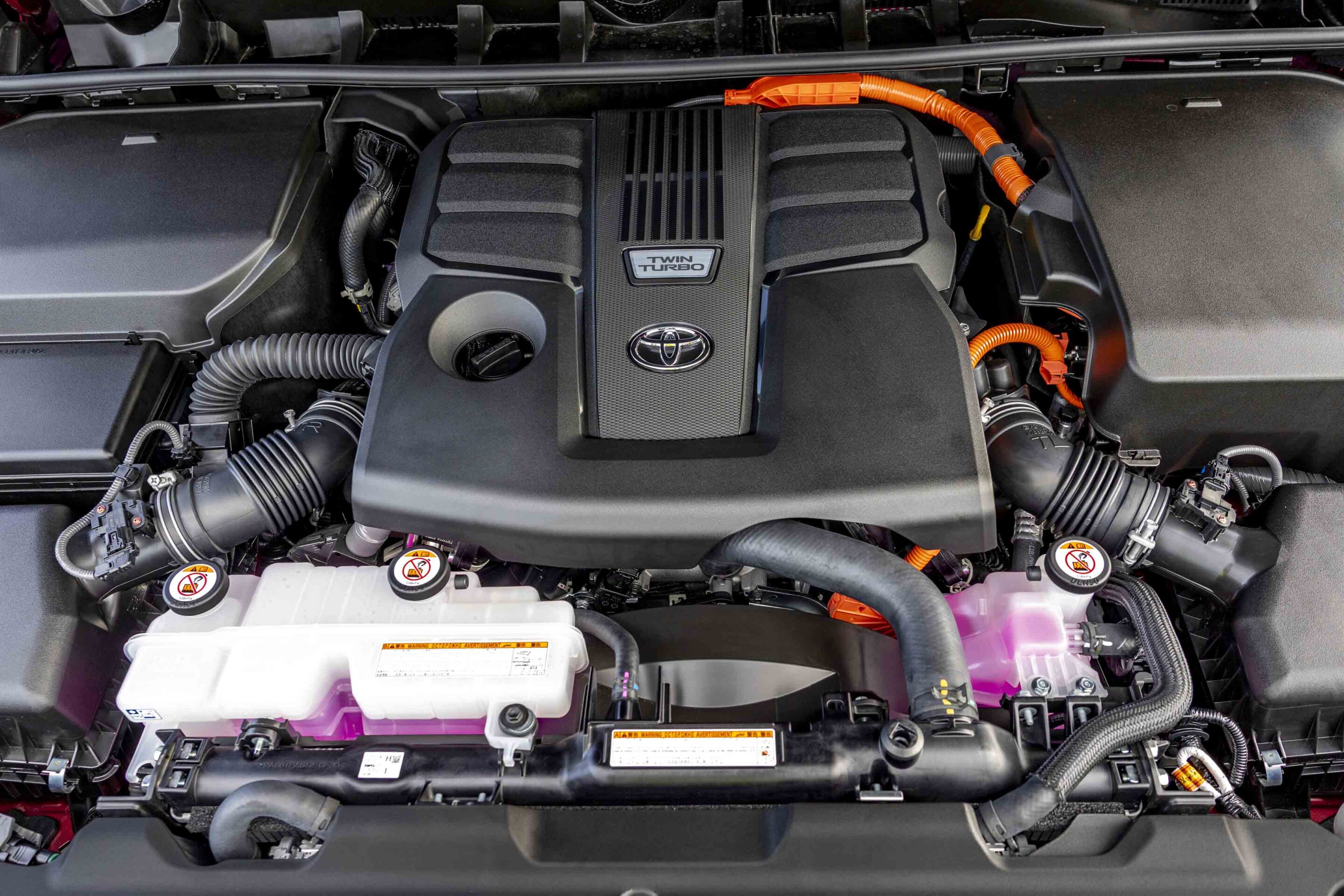
Off-road loop
The test track also features an off-road playground with offset moguls, humps, climbs and a water crossing, and since this was a GR Sport, it would have been remiss of us not to have a go.
The steep climb is cut with offset ruts designed to test a vehicle’s traction and highlight the suspension and electronic aids at work. We tackled it in low range with only the centre diff locked, leaving the GR Sport’s front and rear lockers disengaged. The hybrid retains all of the LC300’s rear-axle articulation to keep the tyres on the ground, while the sharp ETC system quickly quelled any slip and drove the Cruiser up and over.
It was a similar story over the offset moguls and a harsh bed of rocks, with the hybrid performing like any other LC300 – only without the clatter of a diesel engine.
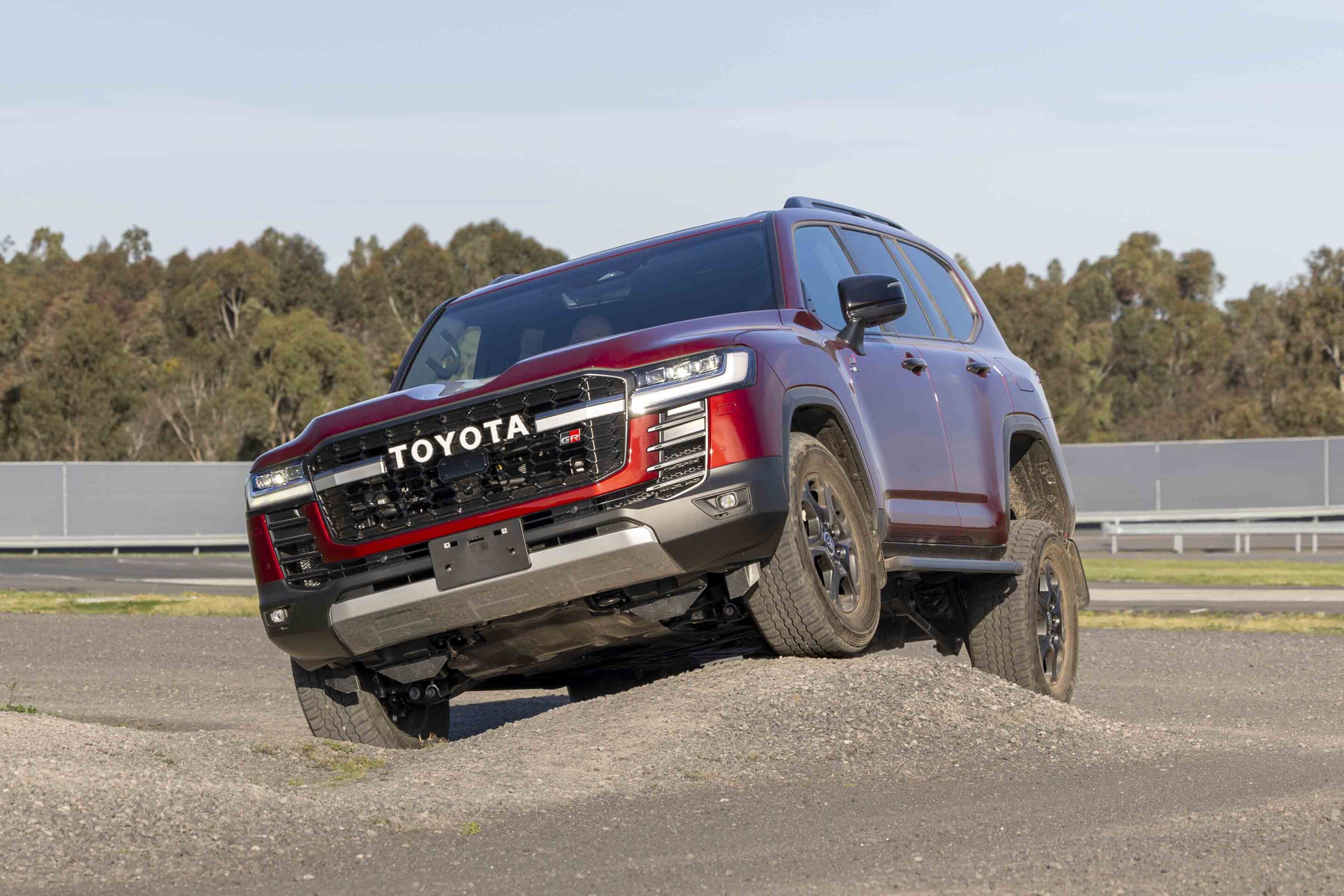
For giggles, we tackled the same obstacles using Crawl Control, and the system handled them just as easily without any throttle input from the driver. We then ran up the steep climb in reverse, again with Crawl Control engaged, proving this clever technology is just as effective in either direction.
Naysayers like to claim that EV-equipped vehicles can’t cross water, so we drove the LandCruiser through a pond with a water depth of 600mm. Needless to say, it went through repeatedly without issue. Toyota is adamant that the hybrid powertrain does not diminish the LandCruiser’s capability in any way.
While this is the first Australian application of Toyota’s Performance Hybrid, the company is quick to remind us it has long been a hybrid pioneer, with five generations of technology since the first Prius launched 28 years ago. In that time, TMCA has sold more than 500,000 hybrid vehicles locally, and today nine models in its line-up are exclusively hybrid-powered.
Hybrids now make up almost half of Toyota’s total sales in Australia.
We recommend
-
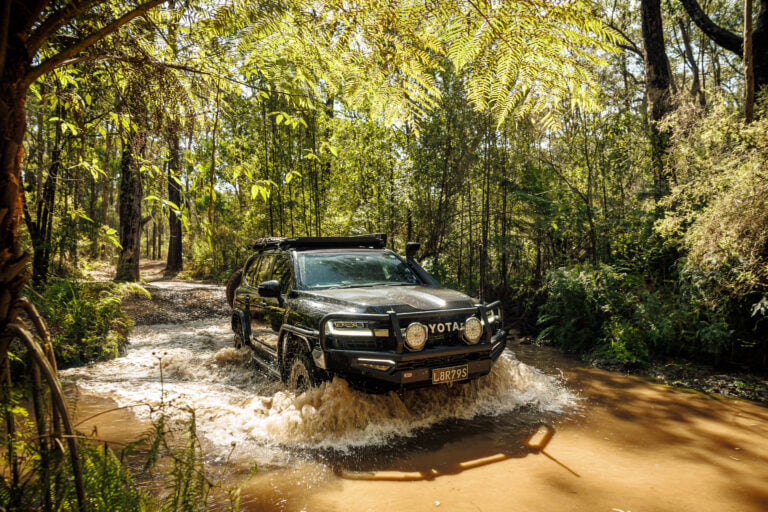 Custom 4x4s
Custom 4x4sToyota LandCruiser 300 GR Sport modified to the max
This LC300 GR Sport is equipped with the best gear on the market
-
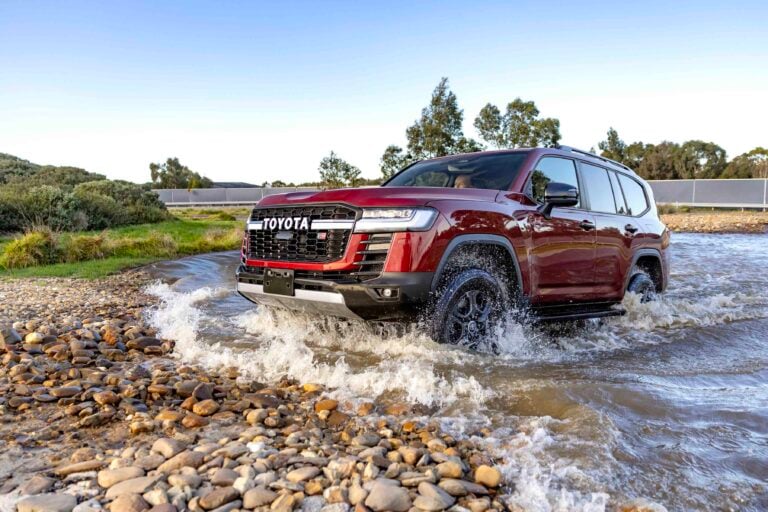 News
NewsToyota LandCruiser 300 Performance Hybrid revealed for Australia
Toyota has unveiled the LandCruiser 300 Performance Hybrid, set to hit Australian showrooms in early 2026
-
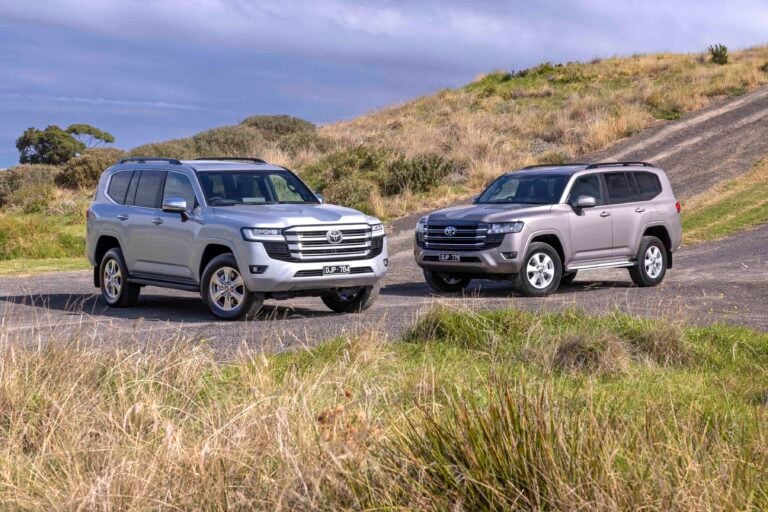 News
News2025 Toyota LandCruiser 300 Series: Updated line-up out now
Significant updates and slight price rise for the family off-roader


